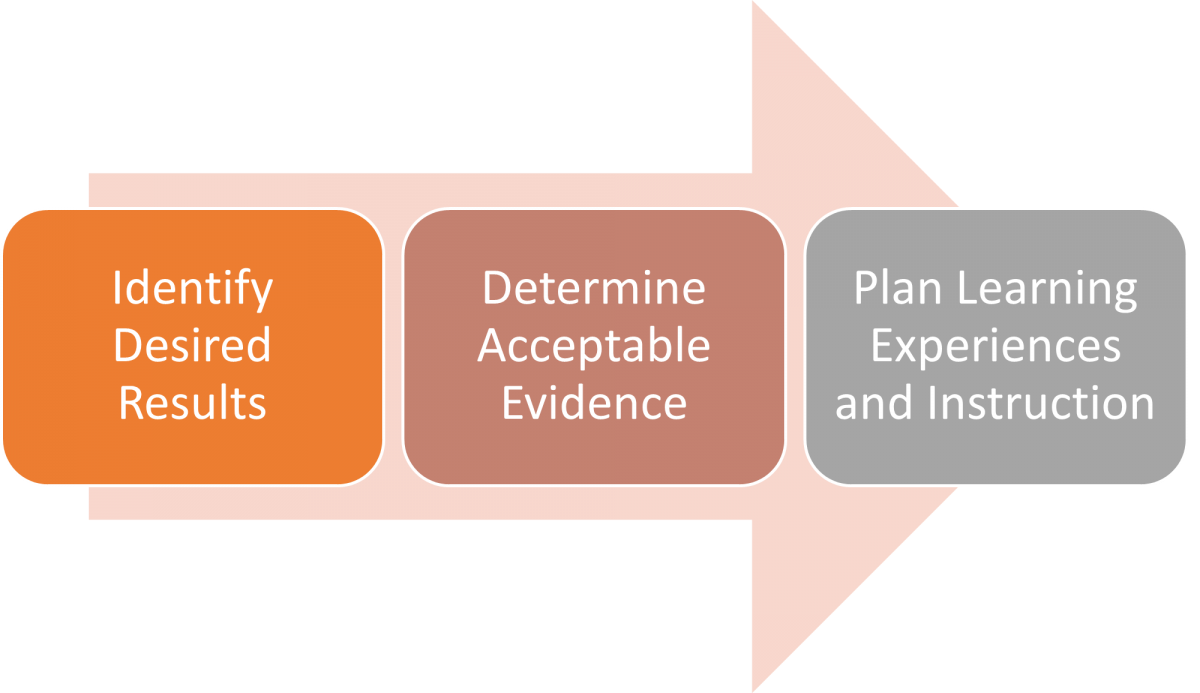What is the first thing you consider when designing a course? Most instructors start with designing course content and learning activities, then assessments, and then develop the learning objectives around the course content and assessments. This is called the “forward design” approach. In contrast, in Backward Design, we start with developing learning objectives so we are able to focus on student learning and understanding. The idea of Backward Design comes from Wiggins & McTighe.
For an overview of Backward Design, please view a brief video from the University of Central Florida.
The Benefits of Using Backward Design
- Focuses on student learning and understanding
- Provides effective guidance for instruction and designing courses
- Ensures the student learning experience and course content align with learning objectives
The Three Stages of Backward Design 
Figure: Backward Design
Stage One: Identify Desired Results
The first step in the process is to define your course goal. What do you want your students to be able to do by the end of this course? What knowledge and skills should students attain?
Stage Two: Determine Acceptable Evidence
In the second stage, consider the assessments your students will complete in order to demonstrate evidence of learning. It is important to consider a wide range of assessment methods in order to ensure that students are being assessed on the goals that you want your students to attain.
Stage Three: Plan Learning Experiences and Instruction
In the third stage, it is the time to consider what instructional strategies and learning activities you will use in order to help students complete the learning objectives. You should develop learning experiences and activities aligned with the defined learning outcomes and assessment methods.
Download the Backward Design Template from Vanderbilt University.
References
- Bowen, R.S. (2017). Understanding by Design. Vanderbilt University. https://cft.vanderbilt.edu/understanding-by-design/
- Kurt, S. (2016). Backward Design. Educational Technology. https://educationaltechnology.net/backward-design-understanding-by-design/
- Wiggins, G, & McTighe, J. (1998). Understanding by Design. ASCD
- Wiggins, G., & McTighe, J. (2005). Understanding by design (2nd ed.). ASC
Experiencing an issue or need additional support? Contact our OneIT Team by